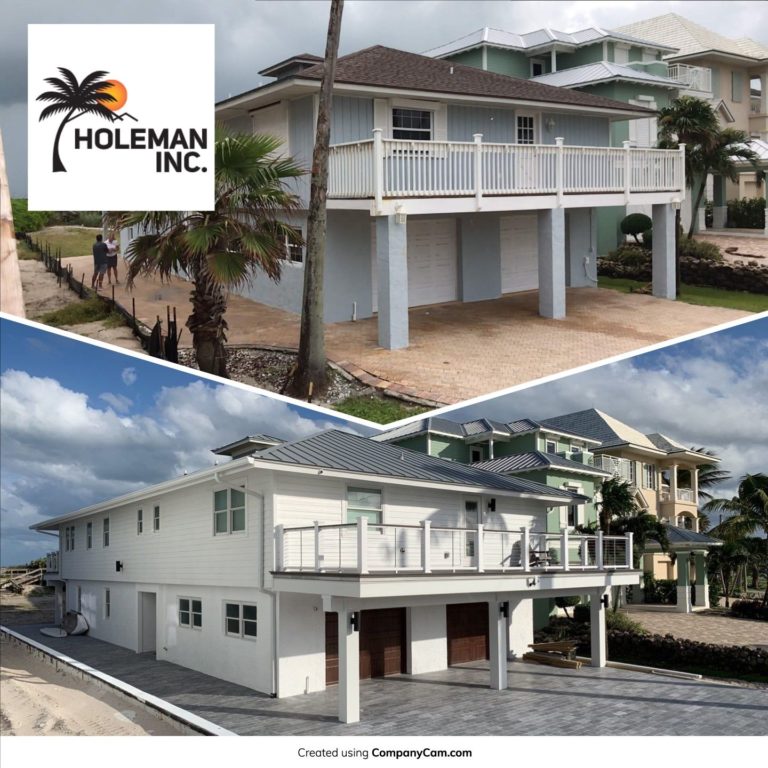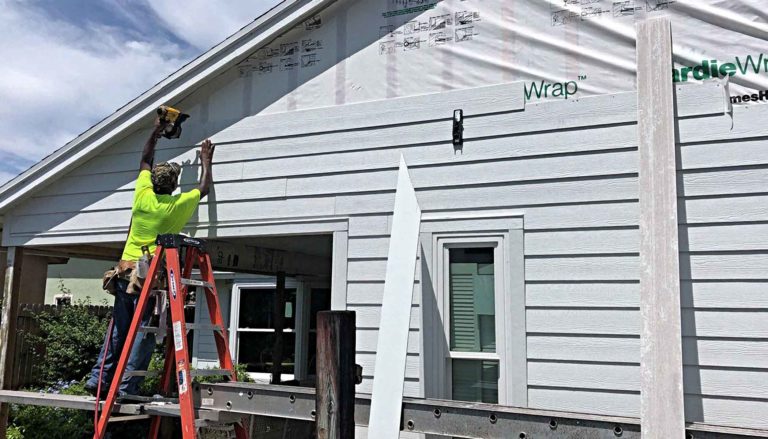James Hardie Fiber Cement Siding:
The Diamond Standard on the Treasure Coast
The Treasure Coast climate presents several challenges for homeowners, not the least of which is keeping their siding looking nice while protecting the infrastructure, possessions, and loved ones residing within. Manufacturers have devised and adapted several products for cladding homes’ exteriors, but only one has withstood the test of time, weather, and geography the residents of Port St. Lucie, Stuart, and Hobe Sound areas face.

Some materials that work well in other parts of the country may also defeat some of the conditions these coastal areas deal with, but over the long haul, only James Hardie fiber cement siding comes out on top of the salty air, high winds, ultraviolet rays, and stifling humidity that batter the Treasure Coast every year.
Incredibly to anyone who doesn’t live on South Florida’s Atlantic Coast, more than 65 days here – that’s nearly two-thirds of the year – are classified as muggy, oppressive, or miserable. Those are official terms used by the National Weather Service. On any given day from mid-April to the end of November, there’s a 37 percent chance you’ll sweat through your T-shirt.
It’s Not the Heat; It’s the Humidity (Actually, It’s Both)
All that humidity is more than many siding materials can withstand. Humidity allows moisture to build up inside wood siding and stagnate behind vinyl and aluminum siding. James Hardie fiber cement siding, however, will not expand or contract with changes in the air’s moisture content, so there’s no chance of the panels cracking or loosening against their fasteners.
Direct sunlight and the ultraviolet rays that it contains quickly bleaches vinyl and other siding materials. James Hardie’s line of ColorPlus® siding, however, comes straight from the factory with a smooth, even baked-on finish in your choice of vibrant colors. ColorPlus siding from James Hardie often lasts 15 years more before it needs repainting.
Water, Water Everywhere…
Proximity to the bounding main is one of the best parts of living in this part of the country, but with so much water – our seemingly daily thunderstorms as well as the ceaseless sea spray – many building materials are quick to deteriorate. Metal siding? Forget about it. It might rust through before it’s fully installed. Wood? Puh-lease.
All that H2O also attracts plenty of pests. No siding material is immune, though these fungi are slow to form and quick to vacate fiber cement siding, as there is little organic material for them to eat. While James Hardie fiber cement siding resists absorbing moister, water can settle on the surface.
And where there is wet, there can be mold and mildew. James Hardie siding’s composite composition is non-porous, making it a snap to clean. You just need a damp sponge or cloth and a commercial cleaner that specifically targets mold and mildew. Follow the manufacturer’s instructions and take precautions by outfitting yourself with rubber gloves and other personal protective equipment. After wiping on the cleaner, hose off the siding with your garden hose. Do not use high-pressure washers.
Salt of the Earth
Seaspray, of course, contains high concentrations of salt that gets left behind when the water evaporates. That makes it especially corrosive and detrimental to any steel structure it lands on. Not only does salt inflict more damage that rusts, but it is also abrasive so it can scratch peel, and chip the paint that covers many siding materials. But with a proper nailing pattern performed by an Elite Preferred installation contractor that follows the manufacturer’s guidelines, James Hardie fiber cement siding repels the salt that, combined with heat and sun exposure, can cause vinyl siding to become stiff and brittle.
James Hardie siding is made of wood pulp, Portland cement, and other composite material and can be molded to closely resemble wood grain, stucco, or masonry. It is more substantial than vinyl and aluminum, so can withstand even hurricane-force winds.
Holeman Construction strictly adheres to industry best practices and James Hardie’s guidelines for material storage, cutting, substrate preparation, fastener selection, and finishing techniques. As members of the James Hardie Contractor Alliance Program, all Holeman siding installers are fully trained and educated on the properties that make this fiber cement siding the top choice among South Florida’s discriminating homeowners.
Contact us for a free, no-obligation estimate.

